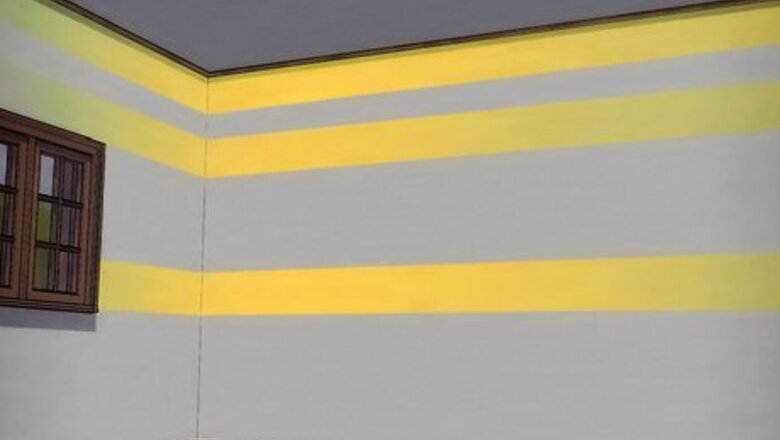
views
Preparing the Space
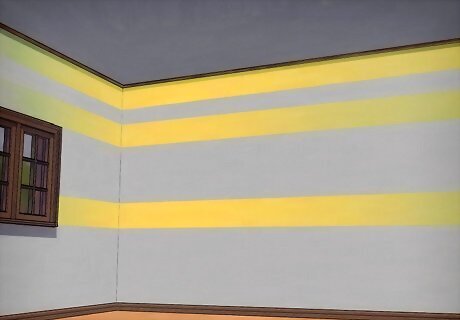
Decide where you want to hang your border. You can hang the border immediately below the ceiling or crown molding, along the top or bottom third of the wall, or halfway down a wall. Choose the location based on your preferences.
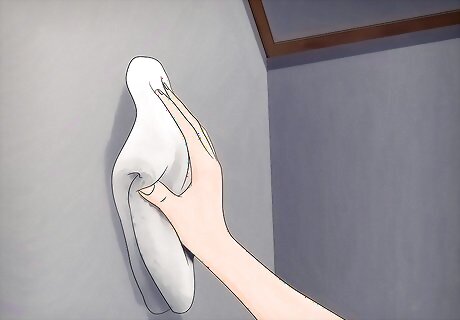
Clean the area where you want to hang your wallpaper. Use soapy water to thoroughly clean the area where you want to hang the wallpaper. Make sure there is no dust, hair or other particles on the wall in that area. Allow it to dry fully before proceeding. Remove any mildew from the walls with a mixture of 2 cups (.473 liters) bleach per 1 gallon (3.785 liter) of water. Hanging wallpaper border over mildew will cover mildew, but not kill it. If you wish, you can also sand the paint on the walls where you will hang your wallpaper. This roughens the surface and helps the wallpaper to stick but is optional.
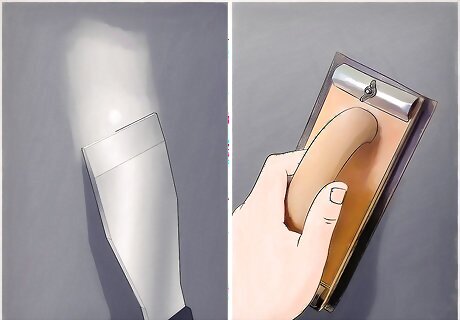
Fix any imperfections. Fill in any holes or cracks with joint compound and then sand the areas to smooth them. Clean the area of any dust after sanding by using a damp sponge.
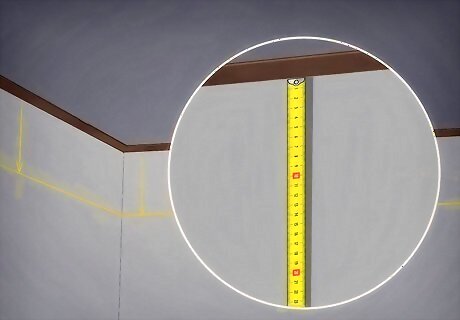
Use a measuring tape, level and pencil to mark the top edge of where you want your border to hang. If you are hanging along the top ceiling or crown molding then you can simply use that edge as your level. Make sure you use a level when marking the location of a border along the middle of the wall or else you could hang the wallpaper crooked.
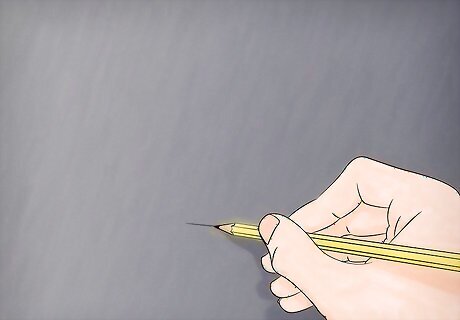
Mark the bottom edge of where you want your border to hang. Use the width of your border to measure the distance between the edges. Again use a level to mark this bottom edge of your wallpaper border.

Calculate how many rolls of border you'll need to hang wallpaper trim. Measure the length of each wall with a measuring tape. Add these numbers together for the overall length of the walls. Read the total length each roll will cover, and divide the overall length of your walls by that number. Be sure to buy 15 percent more than the actual area requires, because you'll need extra to match the patterns together. You must measure all four walls individually because most corners are not perfectly square.
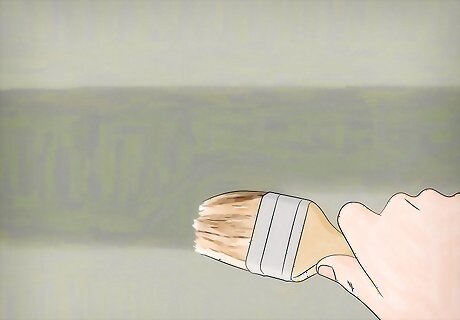
Paint a wallpaper primer-sealer onto the wall. Paint the primer along the strip where you would like to hang the wallpaper. Different primers should be applied differently so you should read the instructions from the manufacturer of your primer for specifics. Allow it to dry but not to sit for longer than 24 hours without applying the border. Be careful not to stray outside your lines because the primer can stain the walls.
Preparing the Border
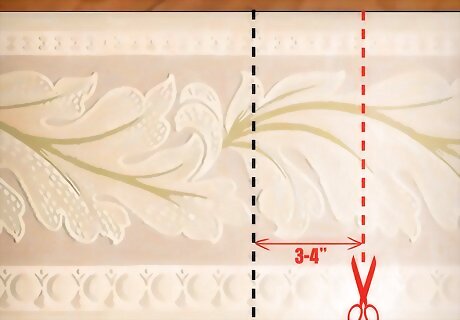
Cut a strip of border the length of one wall plus 3-4 inches (7.5-10 cm) with scissors. Cut a piece of wallpaper to the length you will need to cover one wall plus a little extra. When you install border wallpaper, you want to have extra paper for trimming on the ends. Remember to measure each wall individually for accurate measurements.
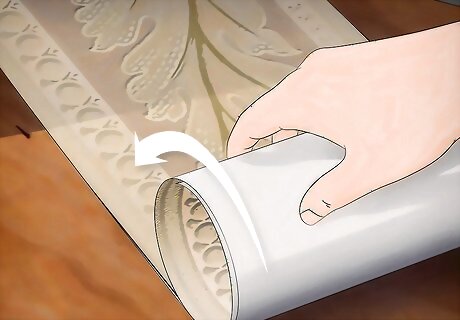
Reverse roll the wallpaper. Roll the wallpaper border into a loose tube shape so that the adhesive is facing outwards. When initially choosing the wallpaper, use a color palette to find colors of wallpaper that will complement the wall. If you can't find complementary colors, you can go to someplace like Sherman Williams or even a Home Depot and try to work with them to find a color match for your wallpaper.
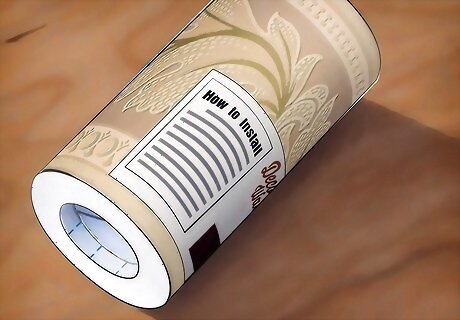
Follow the manufacturer's directions to prepare the strip. Different types of wallpaper borders will need to be prepared differently. Follow the instructions that are particular to your wallpaper. Pre-pasted wallpaper is usually the simplest option but unpasted wallpaper can also work. Pre-pasted wallpaper usually needs to be wet, meaning you should soak it in water for no more than 30 seconds. Unpasted wallpaper will require an appropriate paste. If you are hanging the border on a painted wall then you can use a standard wallpaper paste, but if you are hanging the border on a wall with wallpaper on it already then you should use a vinyl-to-vinyl wallpaper paste. Stretch out the border wallpaper and apply the paste generously onto the backside.
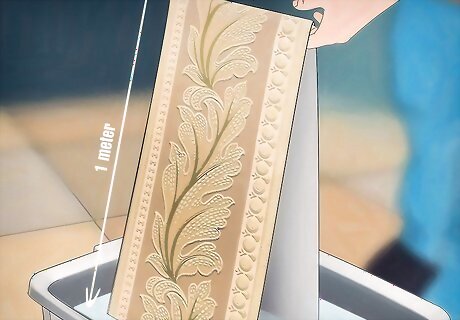
Book the wallpaper. Pull the end of the wallpaper from the water, unrolling it from the tube as you do so. After you have pulled a few feet (or about one meter) from the water fold it back on itself with the pattern on the outside. Continue this, always bringing the adhesive sides together until you have several folds together as if in an accordion. Be careful to be gentle; you do not want to crease the corners.
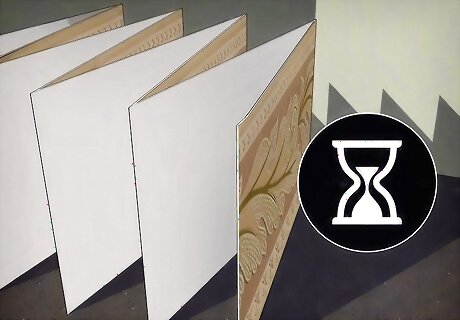
Allow the border to sit for five minutes. Booking the wallpaper border into an accordion shape keeps the paper moist so that it soaks up the liquid and activates the adhesive. You must allow the border to sit for a few minutes to allow the paper to relax and expand.
Hanging the Border Wallpaper
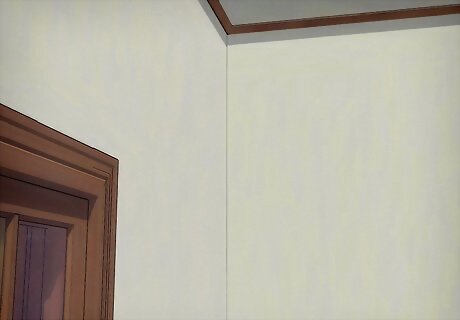
Start in the most least visible corner of the room. You will want to start with the wall that contains the least visible corner of the room. Later on the wallpapers may meet up in a visible seam at this corner so choose a corner that is the least visible. Alternatively you can start at the edge of the entry door to prevent there being any uneven seams at all.
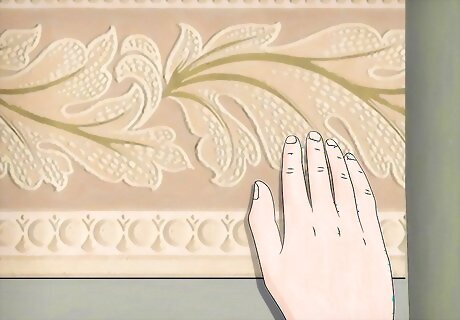
Apply the strip of wallpaper to the wall. Starting in the least visible corner unfold one end of the wallpaper and apply it to the wall. You want the edge of the wallpaper to cover the corner and go into the next wall by at least ½ inch (1 cm). If you have a line drawn on the wall then the wallpaper border should just barely cover the upper line. If you are applying the wallpaper just below the ceiling then you should use the edge of the ceiling to align the wallpaper border.

Flatten the strip down with a wallpaper brush. This will smooth out wrinkles and bubbles and make the wallpaper lie flat. Be careful as you smooth down the wallpaper because it can rotate slightly and become unaligned. Continuously check that you border stays aligned with the ceiling or level along the wall.
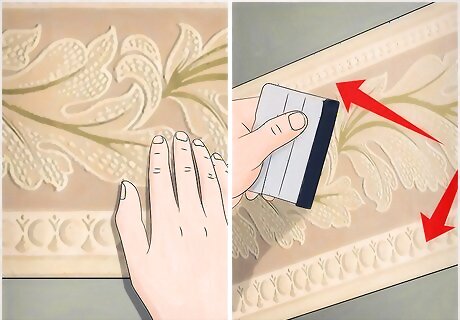
Continue to unfold the border and smooth it into the wall until you reach the end of the piece. Keep hanging the wallpaper border until you reach the end of the wall and your piece of wallpaper. The wallpaper should extend completely into the corner and onto the next wall. Trim the excess wallpaper on the next wall to ¼ inch (6 mm) using a sharp knife or razor and a straight edge. Line up something hard and straight along the edge of the wallpaper and drag the razor down the edge.
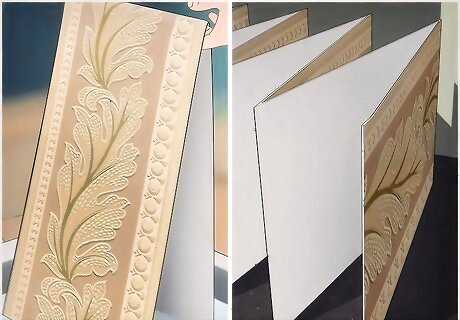
Prepare the next strip of wallpaper. Measure the next wall and cut the next piece of wallpaper border so that it will match up with the pattern on the first strip with a little bit of overlap. Cut the border wallpaper to the length of the wall, reverse roll it, put it in water for a short time and let it sit to absorb the moisture and expand and relax. To install border wallpaper, you need to align the patterns up so no one will notice a break in the design. This is why you must choose where you cut your piece of wallpaper for the next wall.
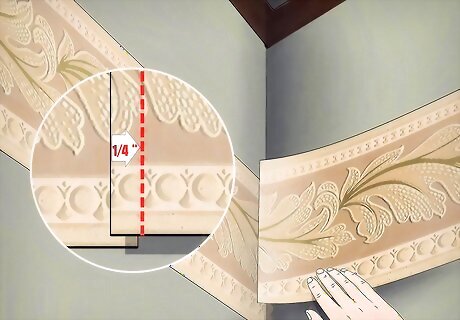
Install the next strip of wallpaper. Overlap the ¼ inch (6 mm) of the first strip on the wall and continue hanging the border on the wall. Remember to keep it level as you hang it. Smooth it out with the wallpaper brush until the end of the piece of wallpaper. Push this border into the corner and into the next wall at the end of the strip.
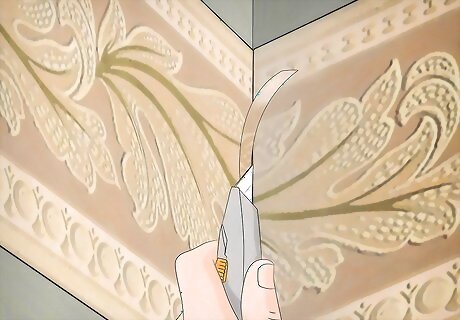
Double cut the overlap with a sharp razor blade. Remove the overlap at the first corner where you put the new strip of wallpaper over the top of the first piece of wallpaper. Take a razor and cut through the upper layer directly at the edge of the border wallpaper so that the two edges line up perfectly. When hanging wallpaper border, you want nice, clean edges that match perfectly with each other.
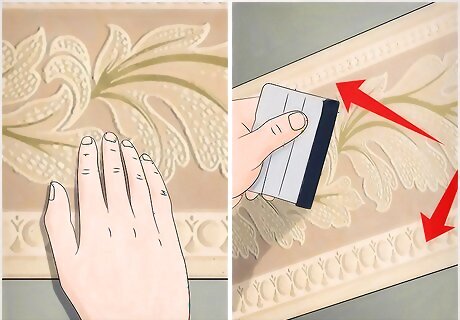
Continue this process until you have finished wallpapering the room. Continue with the following strips of wallpaper border until you have finished all the walls of the room. Use the same processes for each of the following strips of wallpaper, making sure you remove all the bubbles and making the seams clean and sharp.

Wipe off any excess glue. As you hang the wallpaper around the walls you should remove any excess glue along the edges of the border. Use a damp sponge to gently wash away this excess.




















Comments
0 comment